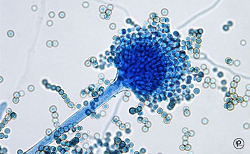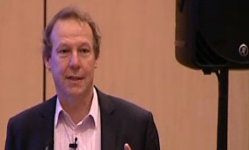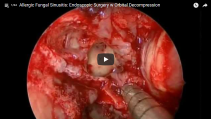Description:
Stewart Armstrong is an aspergillosis patient. A very fit young man he has opted to launch his own campaign to raise awareness and fundraise for Aspergillosis Research.
So this was meant to only be about 5 minutes long and has ended up being 18 minutes… But please watch. I am trying to raise as much awareness as possible for two diseases I have Sarcoidosis and Aspergillosis and you can all help me achieve my goal.
There is a picture of blood for those of you that don’t like blood you can turn away. I do let you know when it is coming.
A massive thank you to Maya Nassar-Maalouf Matt Marsh Joel Corry and Tom Coleman
At the very least please just remember the names sarcoidosis and aspergillosis… but I would prefer if you all did a 60 second push up challenge. No money involved just a clip of you doing as many push-ups as possible in 60 seconds. Also don’t forget to SHARE
smile emoticon
For those that want to here is a page to donate. www.virginmoneygiving.com/StewartArmstrong
Medical and Patient education videos
-
Title
Description
-

Kindly provided by Dr Ronan O’Driscoll and with thanks to Dr P Barber, Bronchoscopy Unit, Wythenshawe Hospital, Manchester. Copyright Dr R. O’Driscoll.
-

This talk on CPA was delivered by Professor David Denning to clinicians and laboratory scientists in Ghana on February 1st 2019, World Aspergillosis Day.
-

Although people usually relate fungi with diseases, Dr. Anne Pringle provides an overview of the vastly diverse and complex world of fungi, and provides examples of the beneficial roles that fungi have on Earth. For example, although some fungi have been associated with devastating infections that threaten harvests every year, other fungi are mutualists needed for the healthy development of plants and animals.
In her second lecture, Pringle explains how one can use a “reverse ecology” approach to describe and characterize different organisms and their habitats, by studying their genes. Her laboratory used this approach to study the origins of the Bay Area Amanita phalloides. Although Amanita phalloides was thought to be an invasive species, historical records were mostly descriptive and hard to use as concrete evidence of the species’ biogeography. Using genetic information, the Pringle laboratory was able to definitively prove that early samples identified as Amanita phalloides in the US are distinct from the European species. They also used molecular data to document the symbiotic associations between Amanita phalloides and plants, proving the efficacy of these approaches to study species that are hard to grow in the lab.
In her third lecture, Pringle provides an overview of convergent interactions, defined as the independent emergence of multi-species interactions with similar physiological or ecological functions. For example, multiple plant lineages have independently evolved interactions with fungi in order to exchange resources and form what are known as mycorrhizal symbioses. To further understand how convergent interactions are formed, the Pringle laboratory studied the evolution of plants that have “pitcher”-like structures as well as the mycorrhizal symbiosis in the Amanitagenus.
-

Although people usually relate fungi with diseases, Dr. Anne Pringle provides an overview of the vastly diverse and complex world of fungi, and provides examples of the beneficial roles that fungi have on Earth. For example, although some fungi have been associated with devastating infections that threaten harvests every year, other fungi are mutualists needed for the healthy development of plants and animals.
In her second lecture, Pringle explains how one can use a “reverse ecology” approach to describe and characterize different organisms and their habitats, by studying their genes. Her laboratory used this approach to study the origins of the Bay Area Amanita phalloides. Although Amanita phalloides was thought to be an invasive species, historical records were mostly descriptive and hard to use as concrete evidence of the species’ biogeography. Using genetic information, the Pringle laboratory was able to definitively prove that early samples identified as Amanita phalloides in the US are distinct from the European species. They also used molecular data to document the symbiotic associations between Amanita phalloides and plants, proving the efficacy of these approaches to study species that are hard to grow in the lab.
In her third lecture, Pringle provides an overview of convergent interactions, defined as the independent emergence of multi-species interactions with similar physiological or ecological functions. For example, multiple plant lineages have independently evolved interactions with fungi in order to exchange resources and form what are known as mycorrhizal symbioses. To further understand how convergent interactions are formed, the Pringle laboratory studied the evolution of plants that have “pitcher”-like structures as well as the mycorrhizal symbiosis in the Amanitagenus.
-

Although people usually relate fungi with diseases, Dr. Anne Pringle provides an overview of the vastly diverse and complex world of fungi, and provides examples of the beneficial roles that fungi have on Earth. For example, although some fungi have been associated with devastating infections that threaten harvests every year, other fungi are mutualists needed for the healthy development of plants and animals.
In her second lecture, Pringle explains how one can use a “reverse ecology” approach to describe and characterize different organisms and their habitats, by studying their genes. Her laboratory used this approach to study the origins of the Bay Area Amanita phalloides. Although Amanita phalloides was thought to be an invasive species, historical records were mostly descriptive and hard to use as concrete evidence of the species’ biogeography. Using genetic information, the Pringle laboratory was able to definitively prove that early samples identified as Amanita phalloides in the US are distinct from the European species. They also used molecular data to document the symbiotic associations between Amanita phalloides and plants, proving the efficacy of these approaches to study species that are hard to grow in the lab.
In her third lecture, Pringle provides an overview of convergent interactions, defined as the independent emergence of multi-species interactions with similar physiological or ecological functions. For example, multiple plant lineages have independently evolved interactions with fungi in order to exchange resources and form what are known as mycorrhizal symbioses. To further understand how convergent interactions are formed, the Pringle laboratory studied the evolution of plants that have “pitcher”-like structures as well as the mycorrhizal symbiosis in the Amanitagenus.
-

Medical student, Anastasiya Kret, tells us about her experiences of an eight week summer scholarship funded by the MRC Centre for Medical Mycology where she traveled from Aberdeen to Germany to work in the Department of Pathogenicity Mechanisms at the Hans Knöll institute in Jena. Find out more about the training opportunities within the MRC Centre for Medical Mycology here.
-

Management of allergic and chronic pulmonary aspergillosis. Masterclass
part 3: Disease Progression and approaches to therapy by Prof David Denning. Presented at 5th Advances Against Aspergillosis conference in Istanbul January 2012. -

The Aspergillus Website maintains a collection of Youtube videos on fungal sinusitis. To access the whole collection click on the link at the top of the image above.

